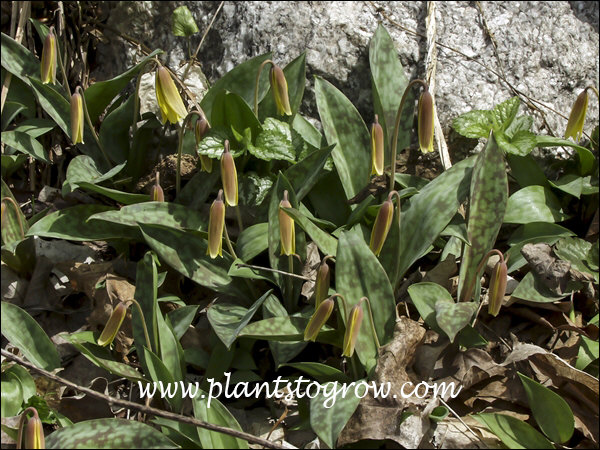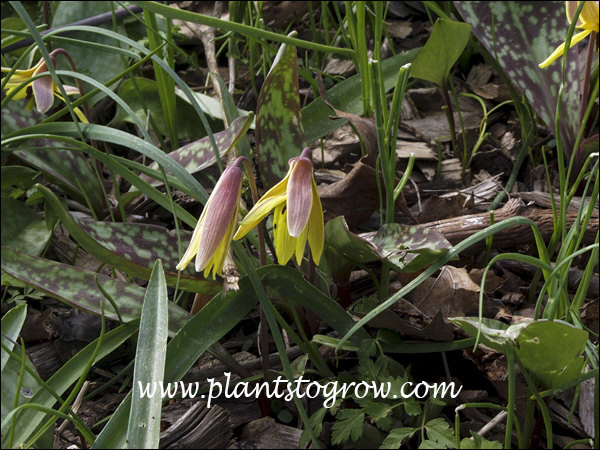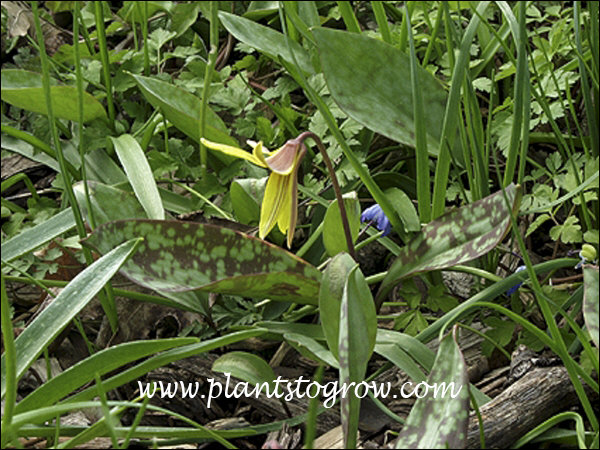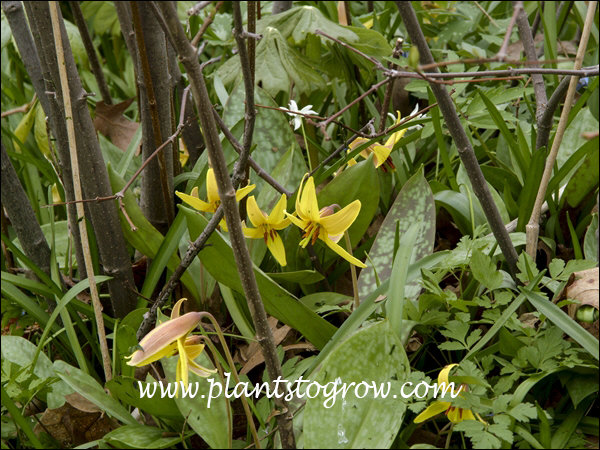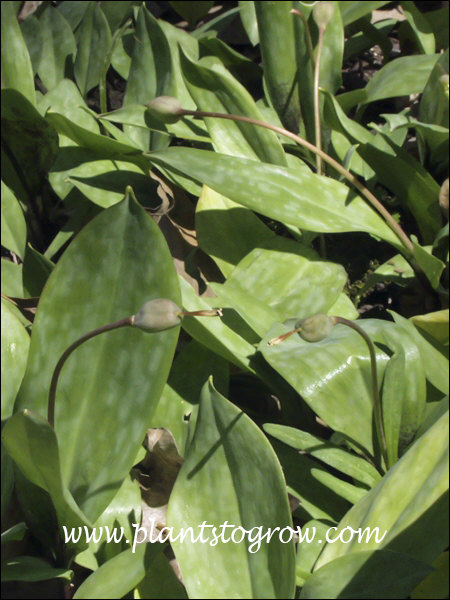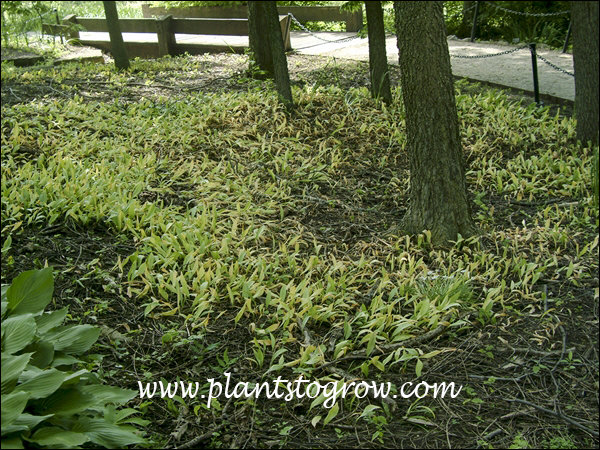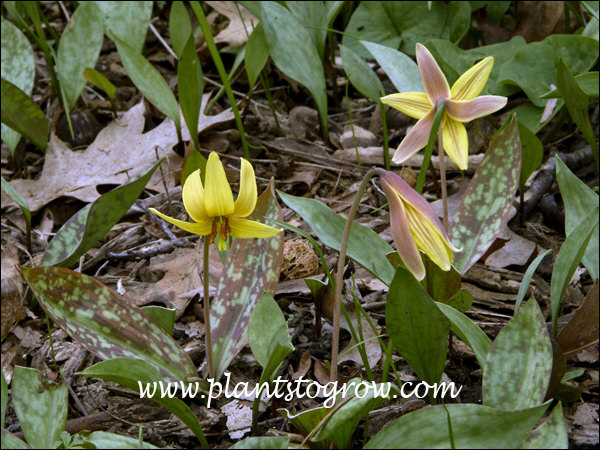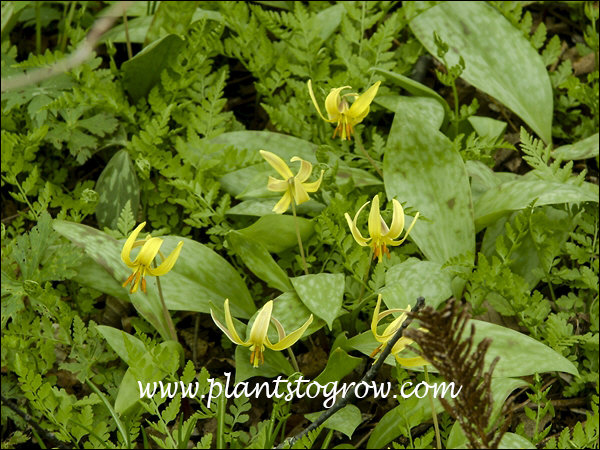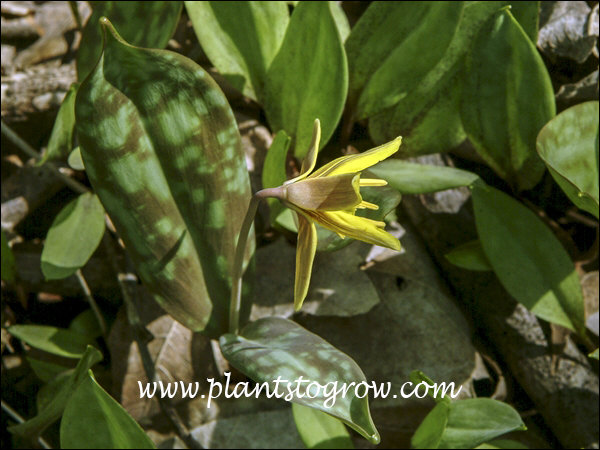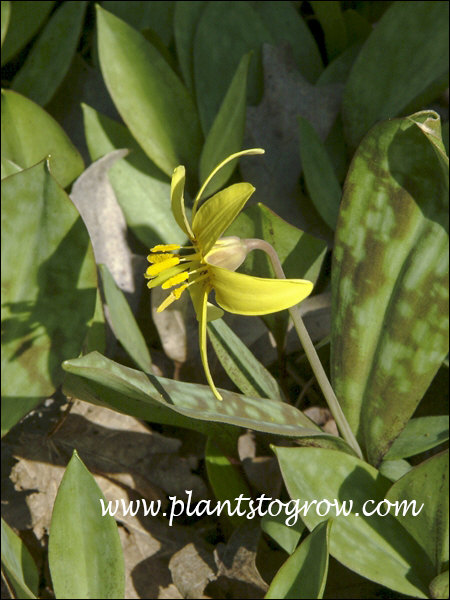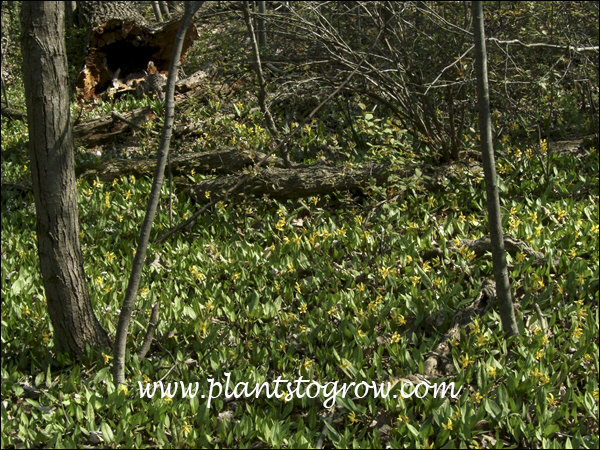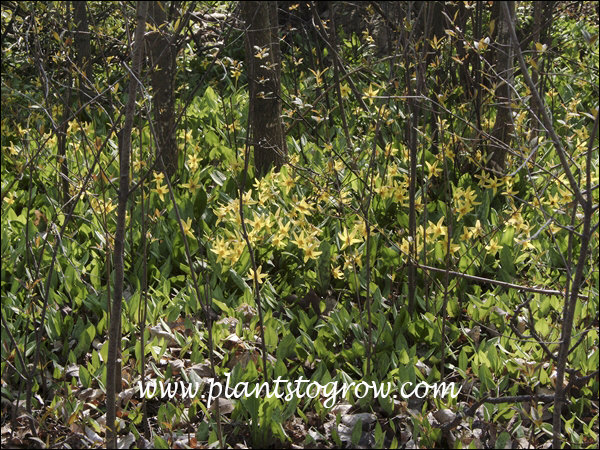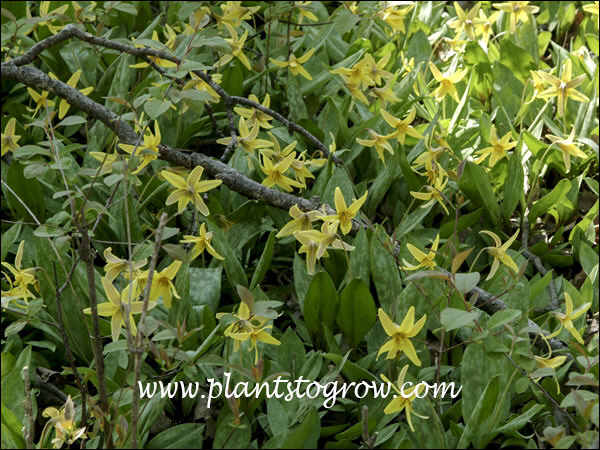| Description | Yellow Trout Lily (Erythronium americanum,) This inhabitant of the moist shaded areas has a beautiful yellow flower. The showy foliage is green with a brown-mottling. Like many woodland wildflowers this plant is ephemeral. |
|---|---|
| Pronunciation | (er-ih-THROH-nee-um)(a-mer-ih-KAY-num) |
| Plant Type | All Plants, Wild Flowers |
| Hardiness Zone | 3-8 |
| Sunlight | prefers semi-shaded spots |
| Moisture | I have seen this plant growing many times in small wet depressions in the woods. It prefers moist to wet areas. |
| Soil & Site | rich, humus, moderately acid ph of 5-6 |
| Flowers | Flower stalks arise from the center of the two basal leaves. One yellow, 1 1/2” bell-shaped flower per stalk. Outside of petals can be tinged with a copper color. The pointed segments consisting of 3 petals and 3 sepals. Immature flowers form a tube, mature flowers will have curved back segments and 6 yellow to reddish stamens. Blooms in April. |
| Fruit | Forms a gg-shaped, green capsule. Seeds have elaiosomes, which are fleshy structures rich in fats and proteins. The ants (myrmecochory) collect the seeds and return them to the nest to eat the elaiosomes. This helps disperse the seeds. |
| Leaves | Flowering plants have two basal elliptical leaves; these are usually mottled with a reddish brown color. Immature plants have one leaf. Leaves originate from small-buried corms |
| Stems | corms (in references they have listed the below ground structures as bulb, bulb-like, bulbous roots and corms) |
| Dimensions | Will form large spreading patches if the area is suitable. Will reach 10" tall. |
| Propagation | Remember that this is a wild flower and ethical practices of propagation should be followed. Best started using nursery propagated plants. Can be propagated by division or digging up small clumps from your garden. Can also be grown from seed which probably will need a cold stratification period (maybe even warm-cold-warm) and a few years to reach blooming size. |
| Misc Facts | The common name, Trout Lily, comes from the coloration of the leaves. AKA: Trout Lily, Yellow Adder's Tongue, Dogtooth Violet, adder's tongue |
| Author's Notes | This is one of my favorite ground cover wild flowers. A large patch of these plants blooming in April adds lots of color to the area. I have seen it growing mostly in moist areas such as depressions in the woods. |
| Notes & Reference | #13-Growing Woodland Plants (Birdseye), #41-Wildflowers of Wisconsin (Stan Teikiela), #61-How to recognize Flowering Wild Plants (William Carey Grimm), #65-North Woods Wildflowers (Doug Ladd), #274-Site Authors' observations and growing experiences |

Cart
